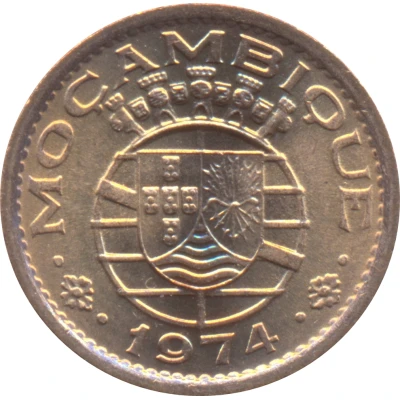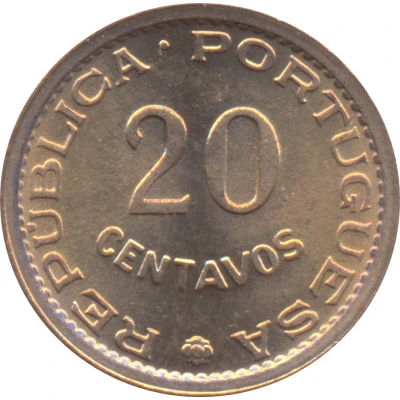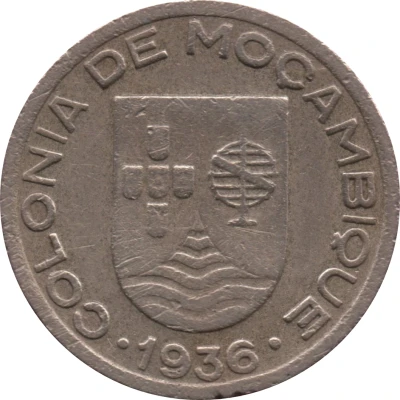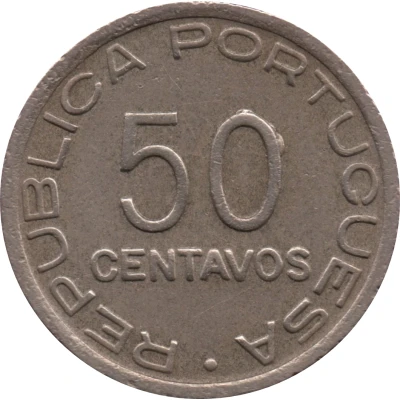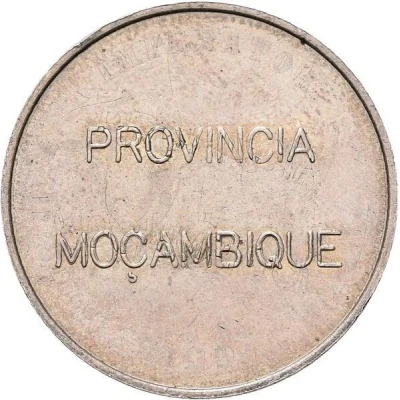
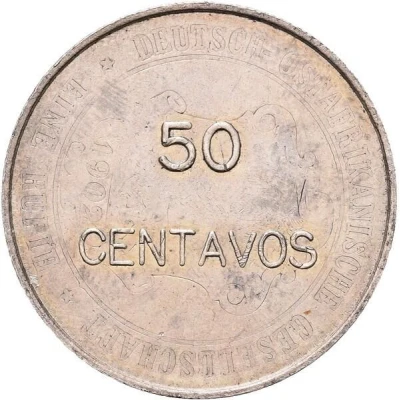

© Schulman auction house
50 Centavos Pattern ND
| Silver (.917) | 11.56 g | 30 mm |
| Issuer | Mozambique |
|---|---|
| Type | Pattern |
| Years | 1914-1918 |
| Value | 50 Centavos (0.50) |
| Currency | Escudo (1911-1974) |
| Composition | Silver (.917) |
| Weight | 11.56 g |
| Diameter | 30 mm |
| Shape | Round |
| Technique | Milled |
| Updated | 2024-10-06 |
| Numista | N#371859 |
|---|---|
| Rarity index | 97% |
Reverse
Inscription in two lines.
Script: Latin
Lettering:
50
CENTAVOS
Comment
Struck over a German East Africa .In 1932 officer José Cardoso visited the old mint in Pretoria, which had been defunct since 1902. Inside, he discovered several coins and dies for a hitherto unknown 50 Centavos-piece of the Portuguese province of Moçambique. All pieces were struck over silver Rupies of German East Africa. When inquiring about the coins, he was told that during World War I, the British troops in the Transvaal and the Portuguese troops in Mozambique cooperated against the Germans and the British were allowed to establish military bases in the Portuguese colony.
However, since the British forces lacked local currency, it proved difficult to make payments there. It was then suggested that the German silver Rupies could instead be used as they were similar in size to the old Portuguese 500 Reis. Since then, British payments were made in Rupies, now considered equivalent to 500 Reis or 50 Centavos.
It is not known with certainty how these overstruck pieces came to be. As far as is known, the Rupies were received with little opposition, thus making recoinage seemingly unnecessary. Possibly, there was a greater reluctance to accept the Rupies than previously believed and the allied British and Portuguese wished to remove German imagery from their currency.
Source:
J. Torres. 1963. "Cunhou-se moeda Portuguesa no Transval durante a guerra?" in: Nummus: Boletim da Sociedade Portuguesa de Numismática, Vol. 7-2, No. 24, pp. 119-121.
Interesting fact
One interesting fact about the Pattern 50 Centavos coin from Mozambique is that it was designed by the artist José de Almada Negreiros, who was a prominent figure in the modernist movement in Portugal. The coin features a unique blend of traditional African motifs and modernist styling, making it a rare and valuable collector's item.
